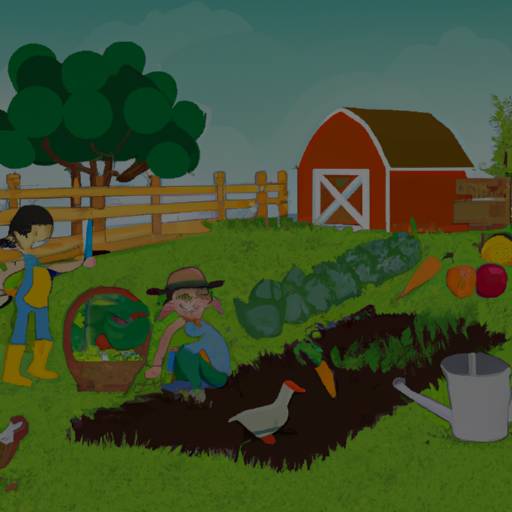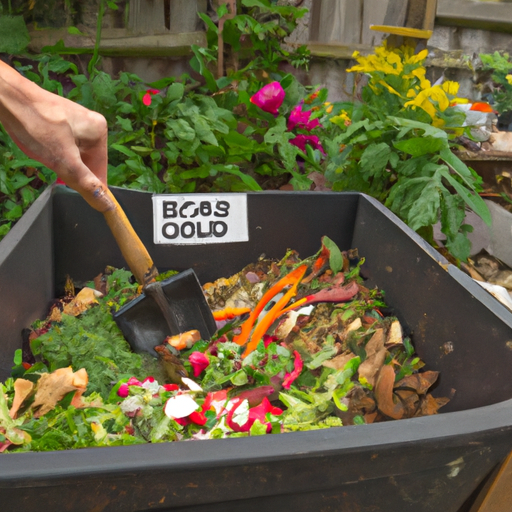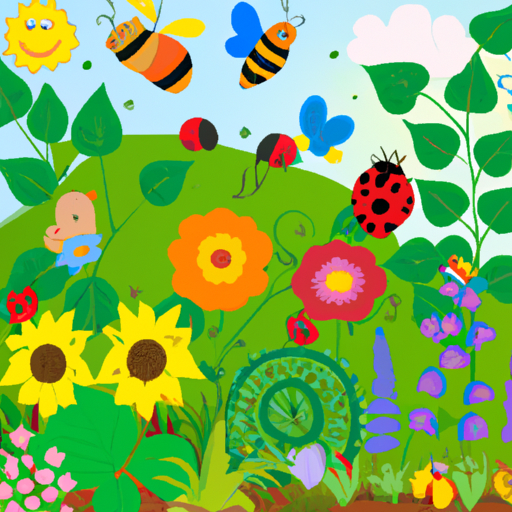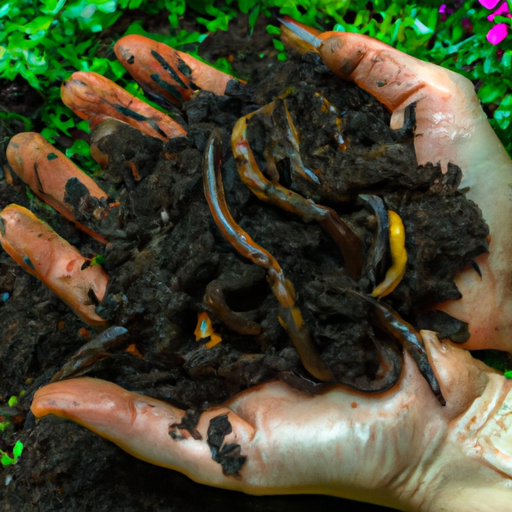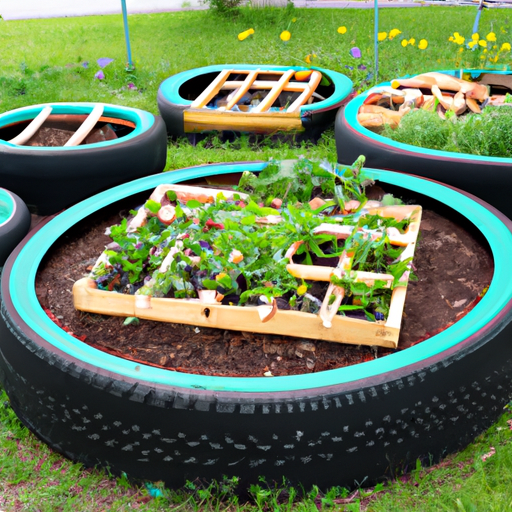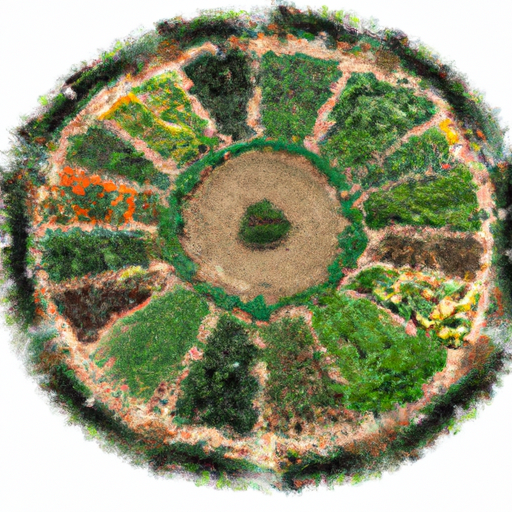Welcome fellow gardeners! As a Master Gardener, I have learned through years of experience that preventing pest infestations in our plants is crucial to maintaining a healthy and thriving garden.
While there are various methods for controlling pests, one technique that has proven successful time and time again is companion planting.
Companion planting involves strategically placing certain plant species next to each other based on their ability to repel or attract specific insects. By using this method, we can reduce the need for harmful pesticides while promoting natural insect control within our gardens.
In this article, we will explore some common examples of companion planting and how it can help prevent pest infestations in your own garden. So grab your gardening gloves and let’s get started!
Understanding The Concept Of Companion Planting
As a Master Gardener, it’s crucial to understand the concept of companion planting.
This method involves growing different plants together that have beneficial relationships with one another.
One of the most significant benefits of companion planting is pest management.
Certain plant combinations can repel pests or attract natural predators, reducing the need for harmful chemicals.
However, there are common mistakes to avoid when companion planting, such as pairing incompatible plants or overcrowding them.
It’s essential to research and plan carefully before implementing this technique in your garden.
By understanding the advantages and potential pitfalls of companion planting, you’ll be able to create a healthy and thriving garden ecosystem without relying on synthetic pesticides or fertilizers.
Identifying Plants That Repel Pests
When it comes to natural pest control, companion planting benefits cannot be understated. One effective method is identifying plants that repel pests. This means selecting specific types of plants that can deter insects and other unwanted critters from your garden or farm.
Some examples include marigolds which keep away nematodes, chives and garlic for aphids, mint and basil for mosquitoes and flies, and even catnip for ants! Not only do these plants act as a barrier against pests but they also add beauty to your landscape.
By incorporating these natural repellents into your gardening plan, you not only reduce the risk of infestation but also avoid harmful chemicals found in conventional pesticides. As Master Gardeners always say, prevention is better than cure – so why not take advantage of nature’s own defenses?
Choosing The Right Plant Combinations
Now that we have identified plants that repel pests, it is time to choose the right plant combinations for companion planting.
Plant pairings are crucial in preventing pest infestations as some plants complement each other’s growth and deter pests naturally.
When choosing which plants to grow together, consider their soil preferences and nutrient needs.
Soil preparation is essential so that your chosen plants receive adequate nutrients from the soil.
Adding compost or organic matter can improve soil structure, water retention, and help control diseases.
Remember to rotate crops annually to prevent depletion of soil nutrients and reduce disease buildup.
With proper planning and care, companion planting can be an effective way to keep pests at bay while promoting healthy plant growth.
Creating A Pest-Resistant Garden
Natural pest control is a crucial aspect of maintaining a healthy and thriving garden. Integrated pest management (IPM) techniques can help prevent infestations by using natural methods, rather than relying on harmful chemicals.
One way to achieve this is through companion planting, which involves strategically placing plants together that complement each other’s growth patterns and deter pests. However, there are additional steps you can take to further increase your garden’s resistance to pests.
Firstly, it is important to regularly inspect your plants for any signs of damage or infestation. Catching an issue early on will make it easier to address before it becomes more severe.
Secondly, encourage beneficial insects such as ladybugs and lacewings into your garden by providing them with shelter and food sources like flowers and herbs. These insects can prey on common garden pests like aphids and caterpillars, helping keep their populations in check.
Lastly, consider incorporating physical barriers such as row covers or netting to protect vulnerable crops from pests like birds or rabbits. By utilizing these IPM strategies along with companion planting techniques, you can create a pest-resistant garden while also promoting biodiversity and sustainability in your gardening practices.
Maintaining Your Companion Planting System
Now that you have established your companion planting system, it is important to maintain its effectiveness.
One key aspect of this is weed management. Weeds can compete with your plants for nutrients and water, so make sure to regularly remove them from the area around your plants.
Additionally, maintaining soil health is crucial for a successful companion planting system. Consider adding organic matter such as compost or mulch to improve soil structure and fertility.
Finally, continue to monitor your plants regularly for signs of pest infestations and disease. Early detection can prevent major problems down the line.
With these practices in place, your companion planting system will thrive and provide numerous benefits for years to come.
Frequently Asked Questions
Can Companion Planting Completely Eliminate The Need For Pesticides?
One may inquire if it is possible to eliminate the need for pesticides by implementing alternative approaches in gardening. Such approach can bring forth a plethora of benefits, including promoting biodiversity and reducing environmental impact.
Companion planting is one such technique that has been widely studied and implemented as an alternative to chemical pest control methods. While it cannot completely replace the use of pesticides, companion planting helps reduce the reliance on them, making your garden more sustainable and ecologically friendly.
Are There Any Plants That Should Not Be Planted Together In A Companion Planting System?
When planning a companion planting system, it is important to consider the potential negative effects of incompatible plant pairings.
There are certain plants that should not be planted together due to their conflicting needs or growth habits.
For example, tall and bushy plants may shade out smaller ones nearby, reducing their access to sunlight and stunting their growth.
Additionally, some plants release chemicals into the soil that can inhibit the growth of neighboring species.
It is important to research which plants to avoid when designing your garden layout in order to ensure optimal success for all varieties involved.
As a Master Gardener, I highly recommend taking the time to carefully plan your companion planting system for maximum benefit and harmony among your plants.
How Long Does It Take To See The Benefits Of Companion Planting?
Ah, the age-old question of how long it takes to see the benefits of companion planting.
Well, my dear green thumbs, let me tell you that there are both benefits and drawbacks to this gardening practice.
On one hand, pairing certain plants together can lead to a higher success rate in terms of pest prevention and overall plant health.
However, on the other hand, it does require some time investment as you experiment with different combinations and observe their effects over time.
So while I cannot give an exact timeline for when you will start seeing results from your companion planting efforts, know that patience is key and the rewards can be well worth it in the end.
Happy Gardening!
Can Companion Planting Be Used In Indoor Gardening?
Indoor companion planting has been gaining popularity among gardening enthusiasts in recent years. While it presents many benefits, such as improved air quality and the ability to grow fresh produce year-round, there are also some challenges that come with indoor gardening.
One of these challenges is finding plants that complement each other and can thrive in the same environment. However, with careful planning and research, companion planting can be used successfully indoors. By grouping compatible plants together, gardeners can create a self-sustaining ecosystem that promotes growth and health for all involved.
Will Companion Planting Work For All Types Of Pests Or Only Certain Ones?
When considering the efficacy of companion planting on different types of pests, it’s important to understand that not all plants will work for every specific pest target. Certain combinations may be more effective at deterring certain pests than others.
As a Master Gardener, I recommend researching which plant pairings have been successful in preventing infestations of the particular type of pest you’re concerned about.
Keep in mind that while companion planting can be a helpful tool in reducing pest damage, it should not be relied upon as the sole method for control. Incorporating other integrated pest management techniques and regular monitoring are also crucial for maintaining a healthy garden.
Conclusion
In conclusion, while companion planting can be a powerful tool in preventing pest infestations, it may not completely eliminate the need for pesticides. However, by pairing certain plants together and creating a diverse garden ecosystem, you can significantly reduce the likelihood of pests taking over your crops.
It’s important to note that there are some plant combinations that should be avoided in companion planting systems. For example, tomatoes and potatoes should not be grown near each other as they attract similar pests like tomato hornworms and Colorado potato beetles.
One interesting statistic to consider is that according to a study conducted by Oregon State University Extension Service, intercropping with flowers reduced whitefly populations on broccoli by 30-40%. This shows just how effective companion planting can be in controlling specific types of pests.
As a Master Gardener myself, I highly recommend experimenting with companion planting in both outdoor and indoor gardening settings.
With patience and careful planning, you’ll soon see the benefits of this natural practice in maintaining healthy and thriving plants.
